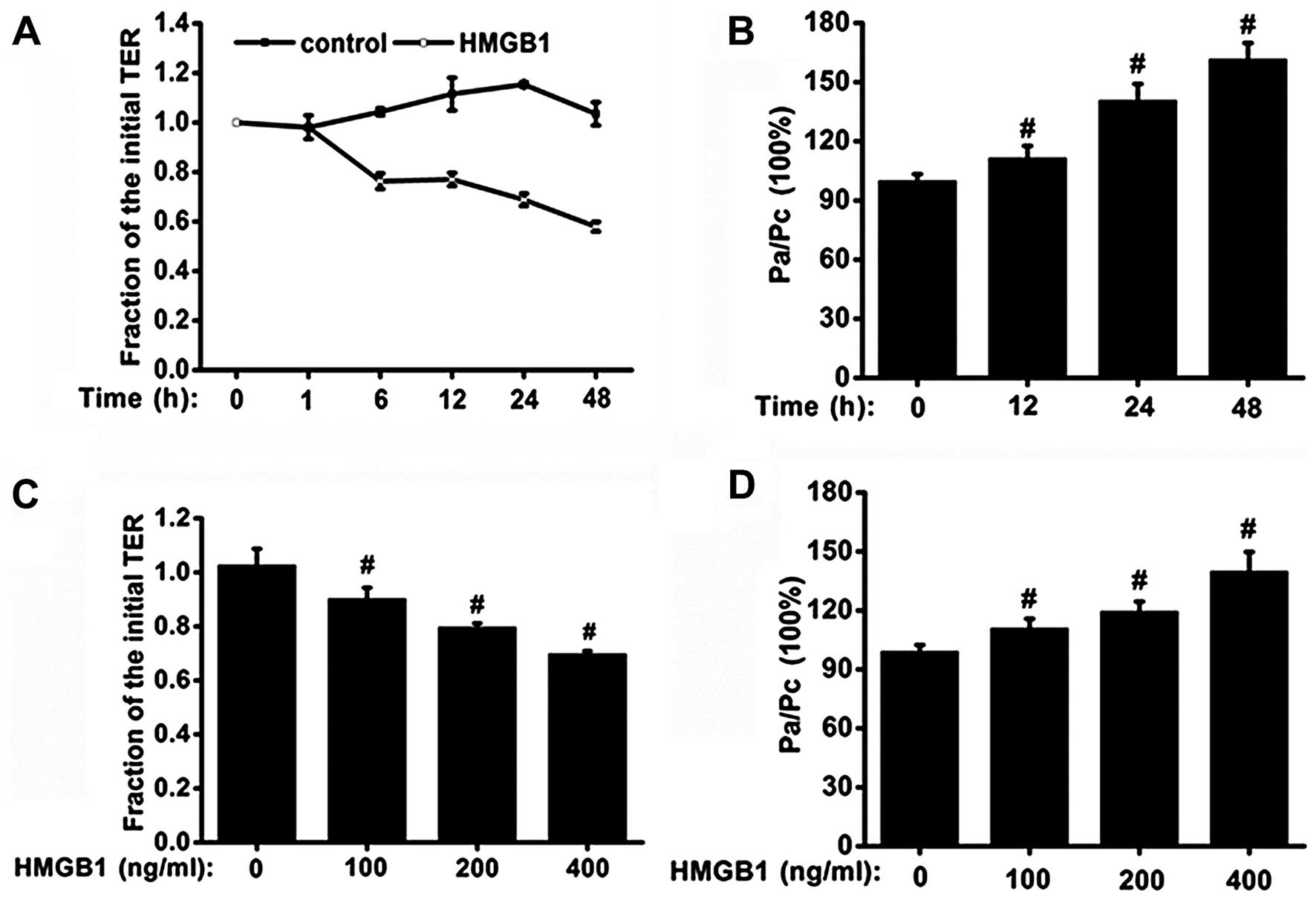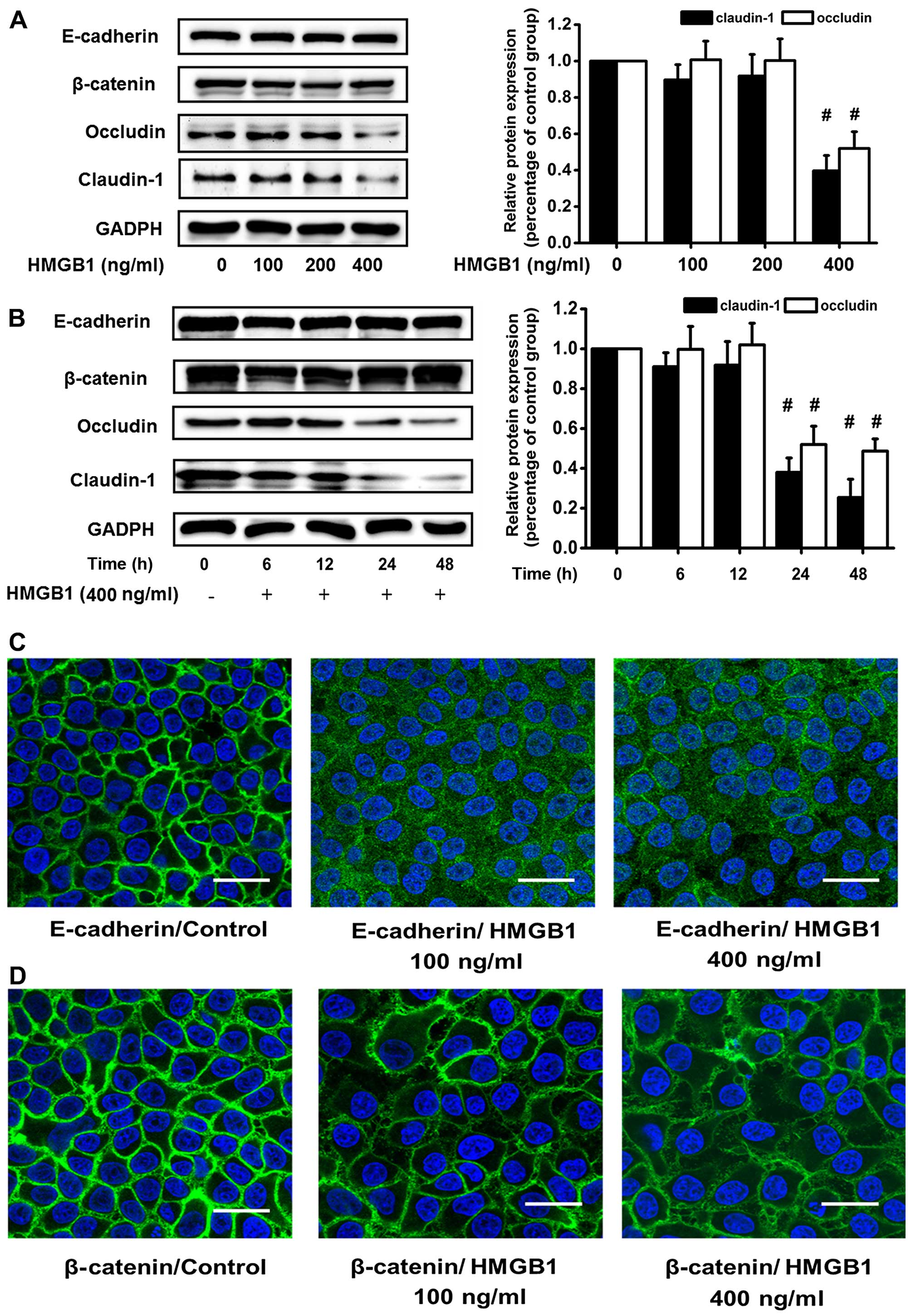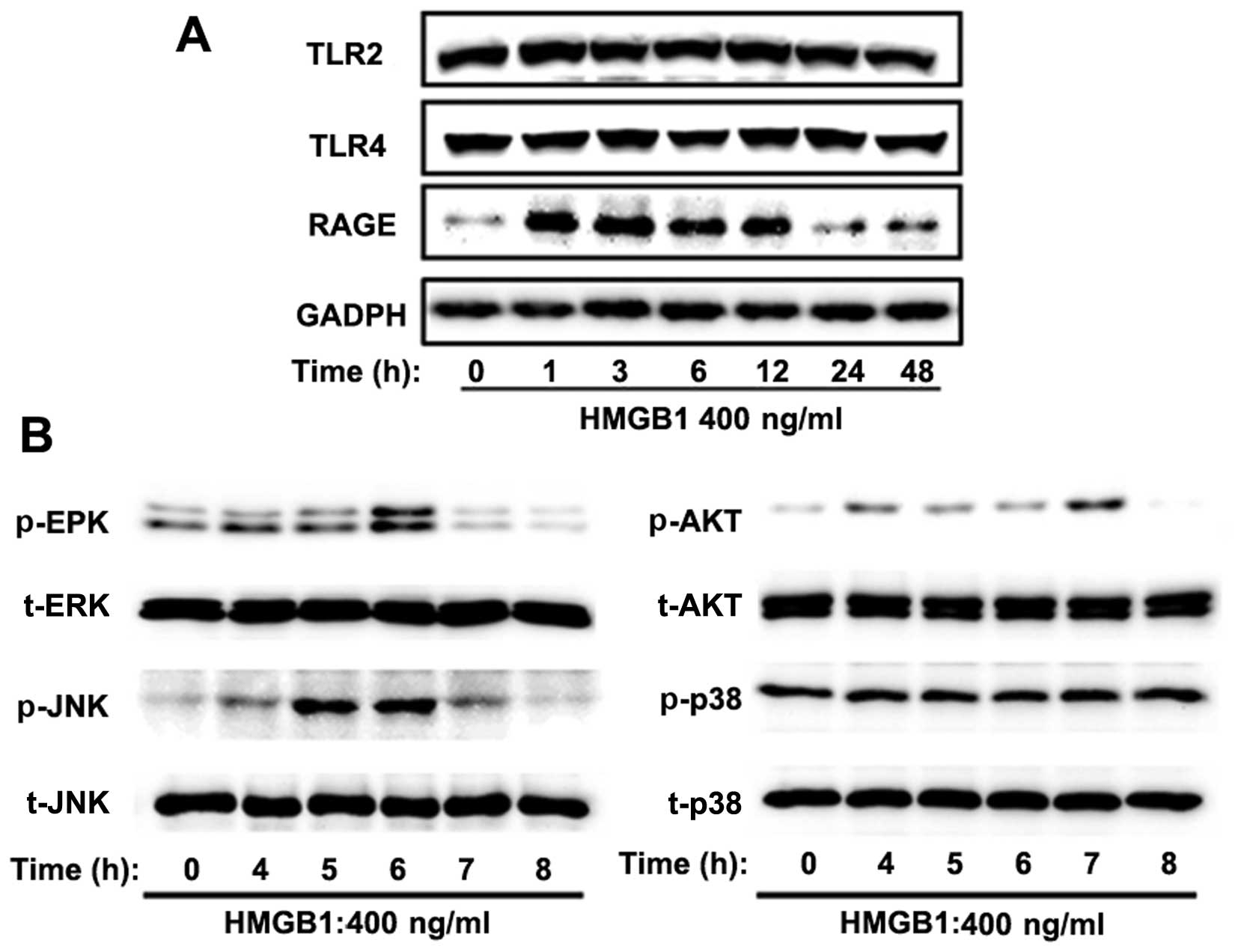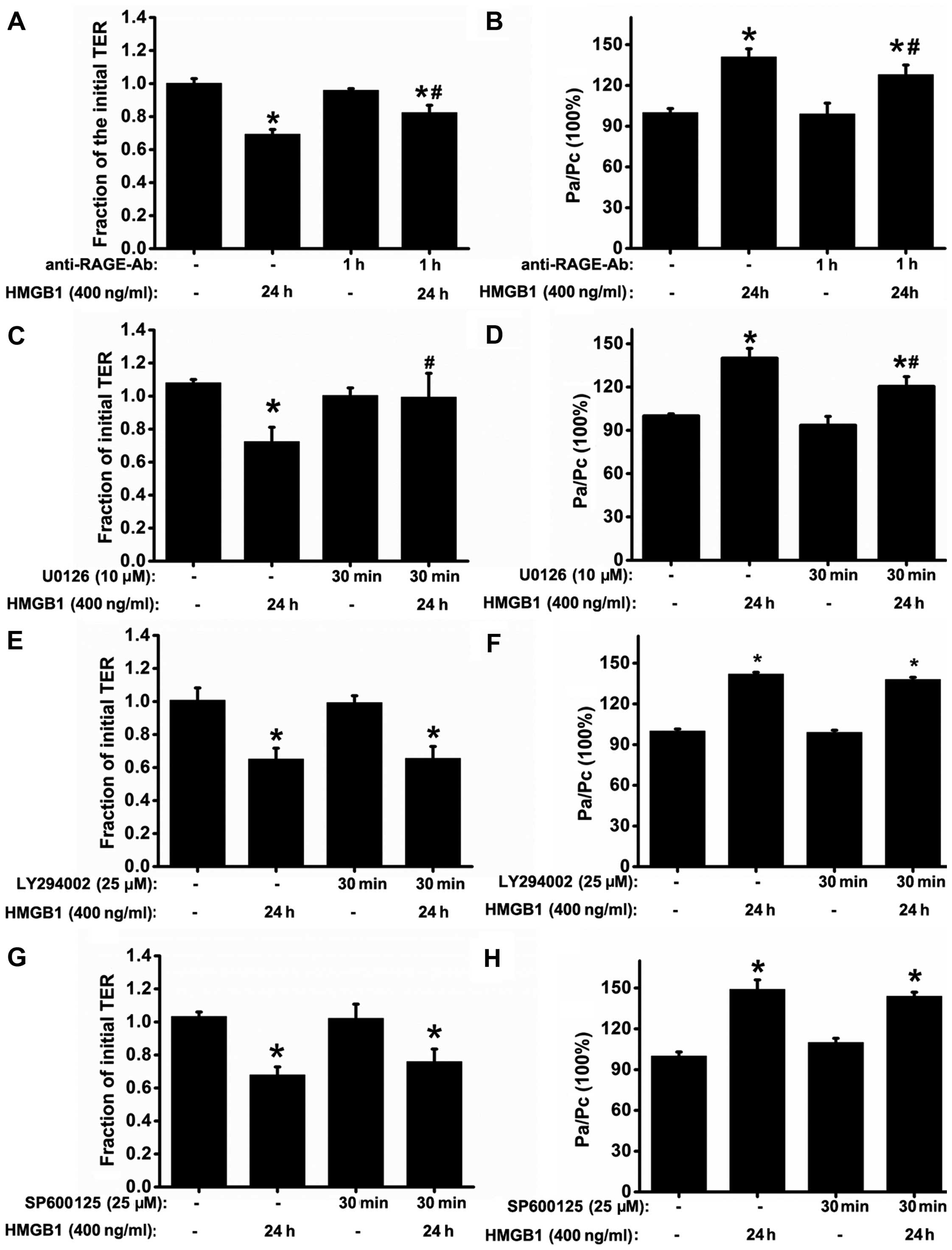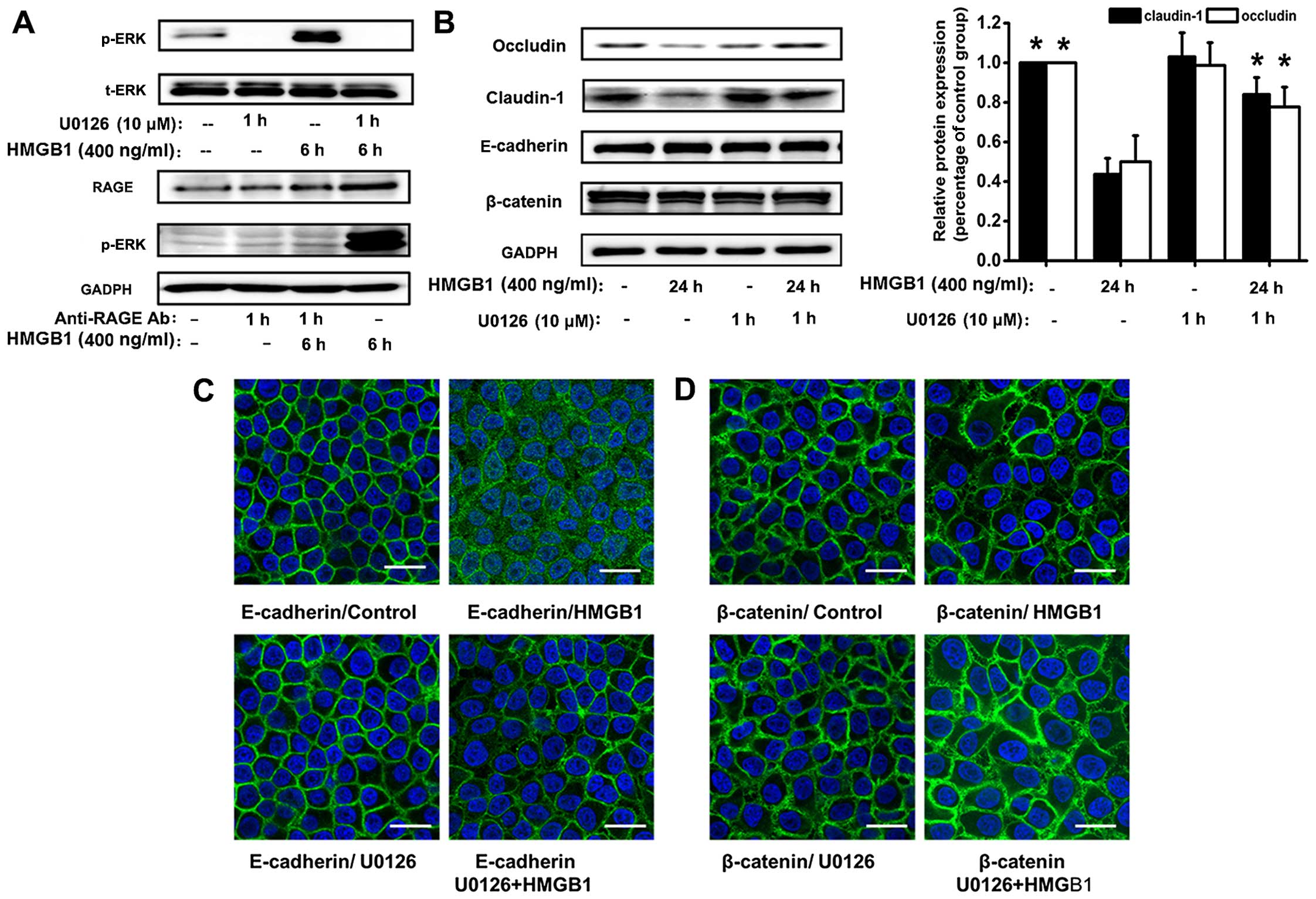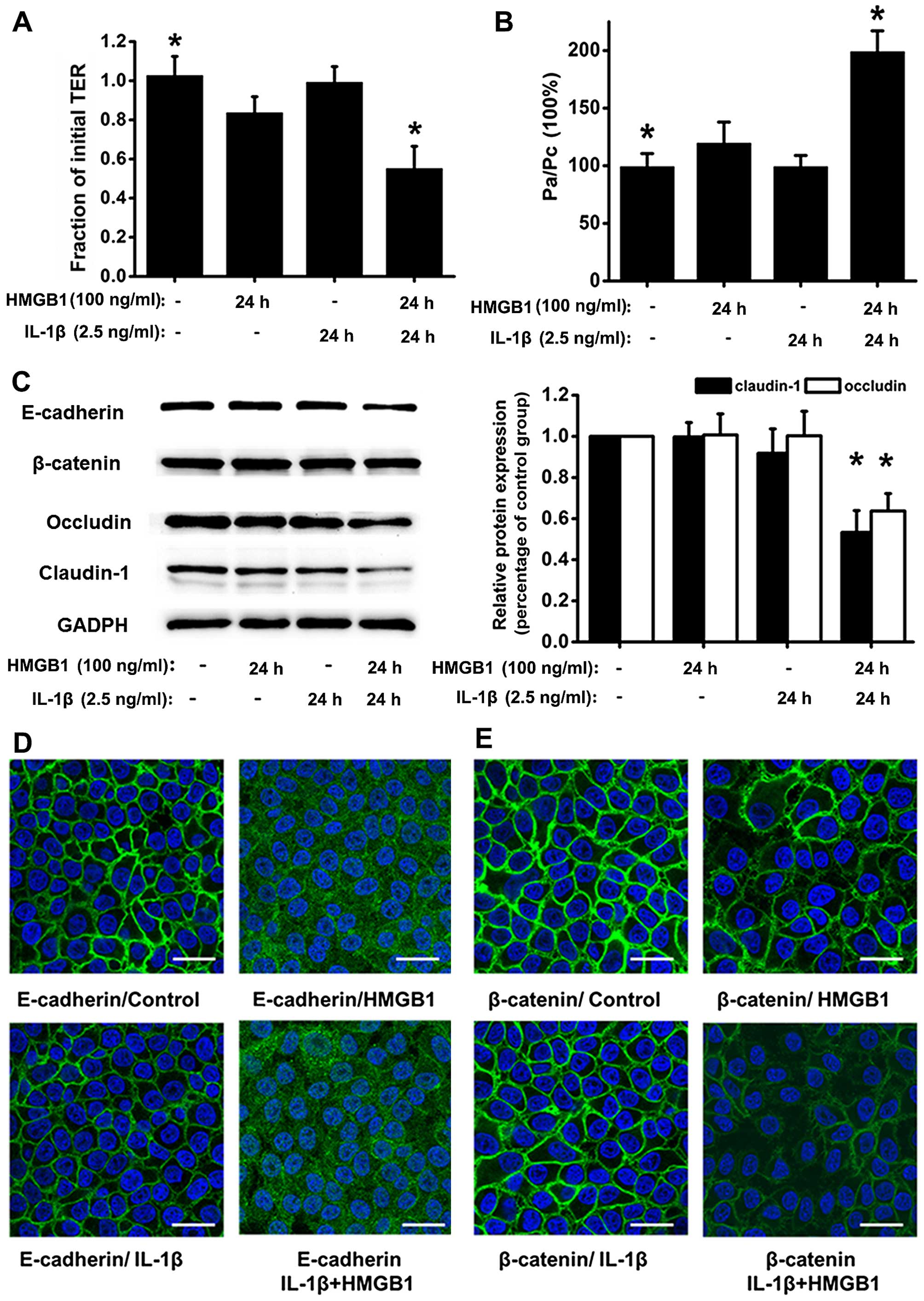|
1
|
Holgate ST, Roberts G, Arshad HS, Howarth
PH and Davies DE: The role of the airway epithelium and its
interaction with environmental factors in asthma pathogenesis. Proc
Am Thorac Soc. 6:655–659. 2009. View Article : Google Scholar : PubMed/NCBI
|
|
2
|
Bazzoni G: Pathobiology of junctional
adhesion molecules. Antioxid Redox Signal. 15:1221–1234. 2011.
View Article : Google Scholar : PubMed/NCBI
|
|
3
|
Steed E, Balda MS and Matter K: Dynamics
and functions of tight junctions. Trends Cell Biol. 20:142–149.
2010. View Article : Google Scholar : PubMed/NCBI
|
|
4
|
Xiao C, Puddicombe SM, Field S, Haywood J,
Broughton-Head V, Puxeddu I, Haitchi HM, Vernon-Wilson E, Sammut D,
Bedke N, et al: Defective epithelial barrier function in asthma. J
Allergy Clin Immunol. 128:549–556. e541–512. 2011. View Article : Google Scholar : PubMed/NCBI
|
|
5
|
Baum B and Georgiou M: Dynamics of
adherens junctions in epithelial establishment, maintenance, and
remodeling. J Cell Biol. 192:907–917. 2011. View Article : Google Scholar : PubMed/NCBI
|
|
6
|
Gumbiner B and Simons K: A functional
assay for proteins involved in establishing an epithelial occluding
barrier: identification of a uvomorulin-like polypeptide. J Cell
Biol. 102:457–468. 1986. View Article : Google Scholar : PubMed/NCBI
|
|
7
|
Castiglioni A, Canti V, Rovere-Querini P
and Manfredi AA: High-mobility group box 1 (HMGB1) as a master
regulator of innate immunity. Cell Tissue Res. 343:189–199. 2011.
View Article : Google Scholar
|
|
8
|
Straub C, Midoro-Horiuti T, Goldblum R,
Pazdrak K and Kurosky A: Elucidating the role of high mobility
group box 1 (HMGB1) cytokine in a murine model of allergic asthma.
J Allergy Clin Immunol. 125:AB1082010. View Article : Google Scholar
|
|
9
|
Kanazawa H, Tochino Y, Asai K, Ichimaru Y,
Watanabe T and Hirata K: Validity of HMGB1 measurement in
epithelial lining fluid in patients with COPD. Eur J Clin Invest.
42:419–426. 2012. View Article : Google Scholar
|
|
10
|
Ferhani N, Letuve S, Kozhich A, Thibaudeau
O, Grandsaigne M, Maret M, Dombret MC, Sims GP, Kolbeck R, Coyle
AJ, et al: Expression of high-mobility group box 1 and of receptor
for advanced glycation end products in chronic obstructive
pulmonary disease. Am J Respir Crit Care Med. 181:917–927. 2010.
View Article : Google Scholar : PubMed/NCBI
|
|
11
|
Hou C, Zhao H, Liu L, Li W, Zhou X, Lv Y,
Shen X, Liang Z, Cai S and Zou F: High mobility group protein B1
(HMGB1) in asthma: Comparison of patients with chronic obstructive
pulmonary disease and healthy controls. Mol Med. 17:807–815. 2011.
View Article : Google Scholar : PubMed/NCBI
|
|
12
|
Ullah MA, Loh Z, Gan WJ, Zhang V, Yang H,
Li JH, Yamamoto Y, Schmidt AM, Armour CL, Hughes JM, et al:
Receptor for advanced glycation end products and its ligand
high-mobility group box-1 mediate allergic airway sensitization and
airway inflammation. J Allergy Clin Immunol. 134:440–450. 2014.
View Article : Google Scholar : PubMed/NCBI
|
|
13
|
Milutinovic PS, Alcorn JF, Englert JM,
Crum LT and Oury TD: The receptor for advanced glycation end
products is a central mediator of asthma pathogenesis. Am J Pathol.
181:1215–1225. 2012. View Article : Google Scholar : PubMed/NCBI
|
|
14
|
Di Candia L, Saunders R and Brightling CE:
The RAGE against the storm. Eur Respir J. 39:515–517. 2012.
View Article : Google Scholar : PubMed/NCBI
|
|
15
|
Lee CC, Lai YT, Chang HT, Liao JW, Shyu
WC, Li CY and Wang CN: Inhibition of high-mobility group box 1 in
lung reduced airway inflammation and remodeling in a mouse model of
chronic asthma. Biochem Pharmacol. 86:940–949. 2013. View Article : Google Scholar : PubMed/NCBI
|
|
16
|
Shim EJ, Chun E, Lee HS, Bang BR, Kim TW,
Cho SH, Min KU and Park HW: The role of high-mobility group box-1
(HMGB1) in the pathogenesis of asthma. Clin Exp Allergy.
42:958–965. 2012.PubMed/NCBI
|
|
17
|
Mitroulis I, Skendros P and Ritis K:
Targeting IL-1beta in disease; The expanding role of NLRP3
inflammasome. Eur J Intern Med. 21:157–163. 2010. View Article : Google Scholar : PubMed/NCBI
|
|
18
|
Sha Y, Zmijewski J, Xu Z and Abraham E:
HMGB1 develops enhanced proinflammatory activity by binding to
cytokines. J Immunol. 180:2531–2537. 2008. View Article : Google Scholar : PubMed/NCBI
|
|
19
|
Bianchi ME: HMGB1 loves company. J Leukoc
Biol. 86:573–576. 2009. View Article : Google Scholar : PubMed/NCBI
|
|
20
|
Zhang D, Zhao H, Zhou L, Song J, Dong H,
Zou F and Cai S: High-mobility group box protein 1 in synergy with
interleukin-1β promotes interleukin-8 expression in human airway
epithelial cells in vitro. Nan Fang Yi Ke Da Xue Xue Bao.
32:1764–1767. 2012.In Chinese. PubMed/NCBI
|
|
21
|
Wan H, Winton HL, Soeller C, Stewart GA,
Thompson PJ, Gruenert DC, Cannell MB, Garrod DR and Robinson C:
Tight junction properties of the immortalized human bronchial
epithelial cell lines Calu-3 and 16HBE14o-. Eur Respir J.
15:1058–1068. 2000. View Article : Google Scholar : PubMed/NCBI
|
|
22
|
Sappington PL, Yang R, Yang H, Tracey KJ,
Delude RL and Fink MP: HMGB1 B box increases the permeability of
Caco-2 enterocytic monolayers and impairs intestinal barrier
function in mice. Gastroenterology. 123:790–802. 2002. View Article : Google Scholar : PubMed/NCBI
|
|
23
|
Wolfson RK, Chiang ET and Garcia JG: HMGB1
induces human lung endothelial cell cytoskeletal rearrangement and
barrier disruption. Microvasc Res. 81:189–197. 2011. View Article : Google Scholar
|
|
24
|
Huang W, Liu Y, Li L, Zhang R, Liu W, Wu
J, Mao E and Tang Y: HMGB1 increases permeability of the
endothelial cell monolayer via RAGE and Src family tyrosine kinase
pathways. Inflammation. 35:350–362. 2012. View Article : Google Scholar
|
|
25
|
Hardyman MA, Wilkinson E, Martin E,
Jayasekera NP, Blume C, Swindle EJ, Gozzard N, Holgate ST, Howarth
PH, Davies DE and Collins JE: TNF-alpha-mediated bronchial barrier
disruption and regulation by src-family kinase activation. J
Allergy Clin Immunol. 132:665–675 e668. 2013. View Article : Google Scholar
|
|
26
|
Walsh SV, Hopkins AM and Nusrat A:
Modulation of tight junction structure and function by cytokines.
Adv Drug Deliv Rev. 41:303–313. 2000. View Article : Google Scholar : PubMed/NCBI
|
|
27
|
Yanai H, Ban T and Taniguchi T:
High-mobility group box family of proteins: ligand and sensor for
innate immunity. Trends Immunol. 33:633–640. 2012. View Article : Google Scholar : PubMed/NCBI
|
|
28
|
Heijink IH, Kies PM, Kauffman HF, Postma
DS, van Oosterhout AJ and Vellenga E: Down-regulation of E-cadherin
in human bronchial epithelial cells leads to epidermal growth
factor receptor-dependent Th2 cell-promoting activity. J Immunol.
178:7678–7685. 2007. View Article : Google Scholar : PubMed/NCBI
|
|
29
|
Heijink IH, van Oosterhout A and Kapus A:
Epidermal growth factor receptor signalling contributes to house
dust mite-induced epithelial barrier dysfunction. Eur Respir J.
36:1016–1026. 2010. View Article : Google Scholar : PubMed/NCBI
|
|
30
|
Petecchia L, Sabatini F, Varesio L,
Camoirano A, Usai C, Pezzolo A and Rossi GA: Bronchial airway
epithelial cell damage following exposure to cigarette smoke
includes disassembly of tight junction components mediated by the
extracellular signal-regulated kinase 1/2 pathway. Chest.
135:1502–1512. 2009. View Article : Google Scholar : PubMed/NCBI
|
|
31
|
Song J, Zhao H, Dong H, Zhang D, Zou M,
Tang H, Liu L, Liang Z, Lv Y, Zou F and Cai S: Mechanism of
E-cadherin redistribution in bronchial airway epithelial cells in a
TDI-induced asthma model. Toxicol Lett. 220:8–14. 2013. View Article : Google Scholar : PubMed/NCBI
|
|
32
|
Kevil CG, Oshima T, Alexander B, Coe LL
and Alexander JS: H2O2-mediated permeability:
role of MAPK and occludin. Am J Physiol Cell Physiol. 279:C21–C30.
2000.PubMed/NCBI
|
|
33
|
Lotze MT and Tracey KJ: High-mobility
group box 1 protein (HMGB1): nuclear weapon in the immune arsenal.
Nat Rev Immunol. 5:331–342. 2005. View
Article : Google Scholar : PubMed/NCBI
|
|
34
|
Nawijn MC, Hackett TL, Postma DS, van
Oosterhout AJ and Heijink IH: E-cadherin: gatekeeper of airway
mucosa and allergic sensitization. Trends Immunol. 32:248–255.
2011. View Article : Google Scholar : PubMed/NCBI
|
|
35
|
Lambrecht BN and Hammad H: The airway
epithelium in asthma. Nat Med. 18:684–692. 2012. View Article : Google Scholar : PubMed/NCBI
|
|
36
|
Pantano C, Ather JL, Alcorn JF, Poynter
ME, Brown AL, Guala AS, Beuschel SL, Allen GB, Whittaker LA,
Bevelander M, et al: Nuclear factor-kappaB activation in airway
epithelium induces inflammation and hyperresponsiveness. Am J
Respir Crit Care Med. 177:959–969. 2008. View Article : Google Scholar : PubMed/NCBI
|
|
37
|
Wachtel M, Bolliger MF, Ishihara H, Frei
K, Bluethmann H and Gloor SM: Down-regulation of occludin
expression in astrocytes by tumour necrosis factor (TNF) is
mediated via TNF type-1 receptor and nuclear factor-kappaB
activation. J Neurochem. 78:155–162. 2001. View Article : Google Scholar : PubMed/NCBI
|
|
38
|
West MR, Ferguson DJ, Hart VJ, Sanjar S
and Man Y: Maintenance of the epithelial barrier in a bronchial
epithelial cell line is dependent on functional E-cadherin local to
the tight junctions. Cell Commun Adhes. 9:29–44. 2002. View Article : Google Scholar : PubMed/NCBI
|



